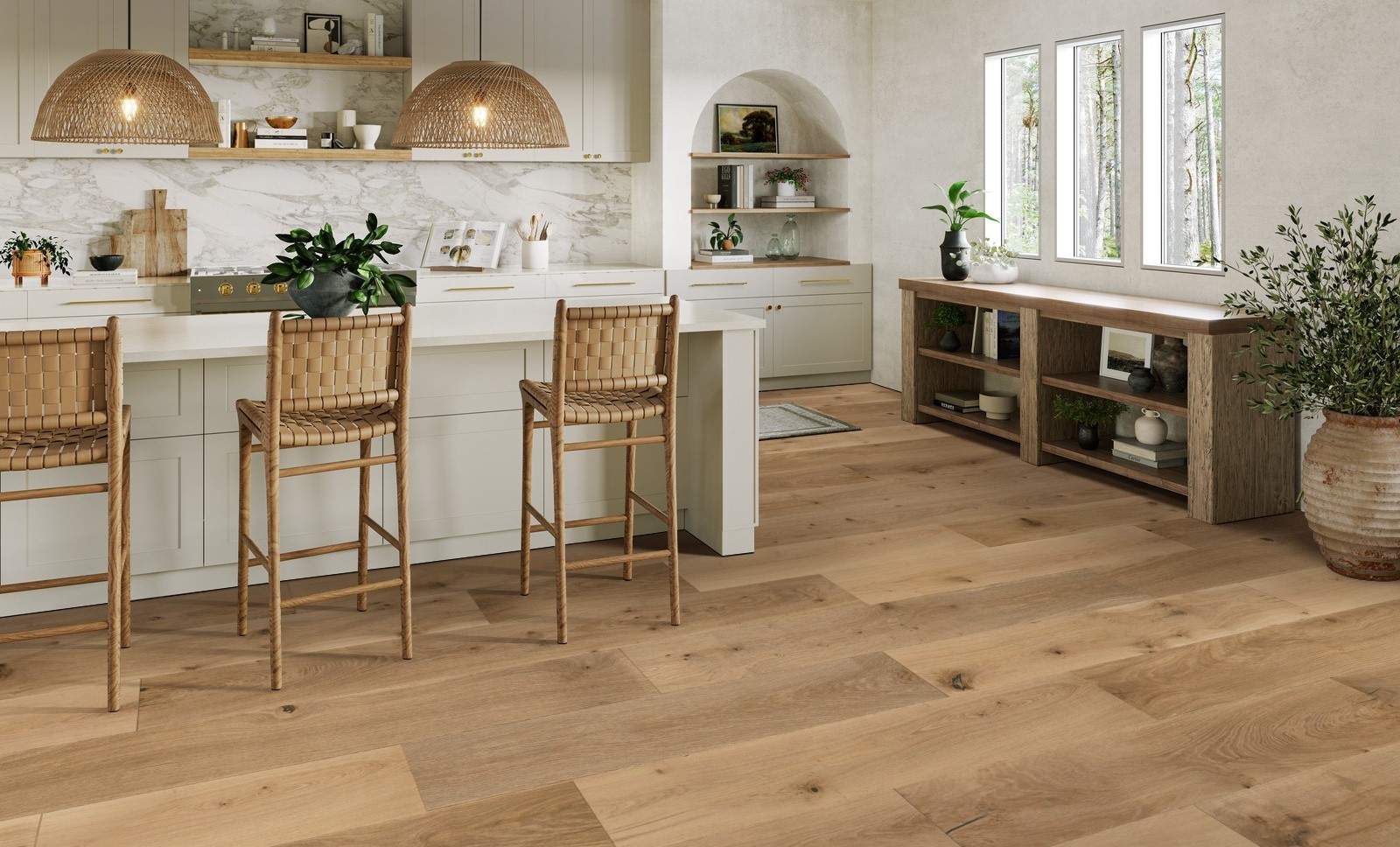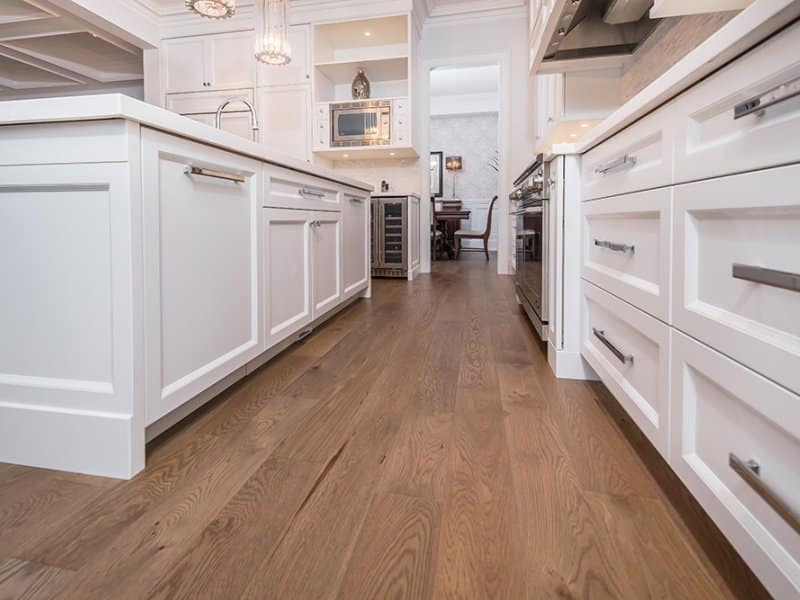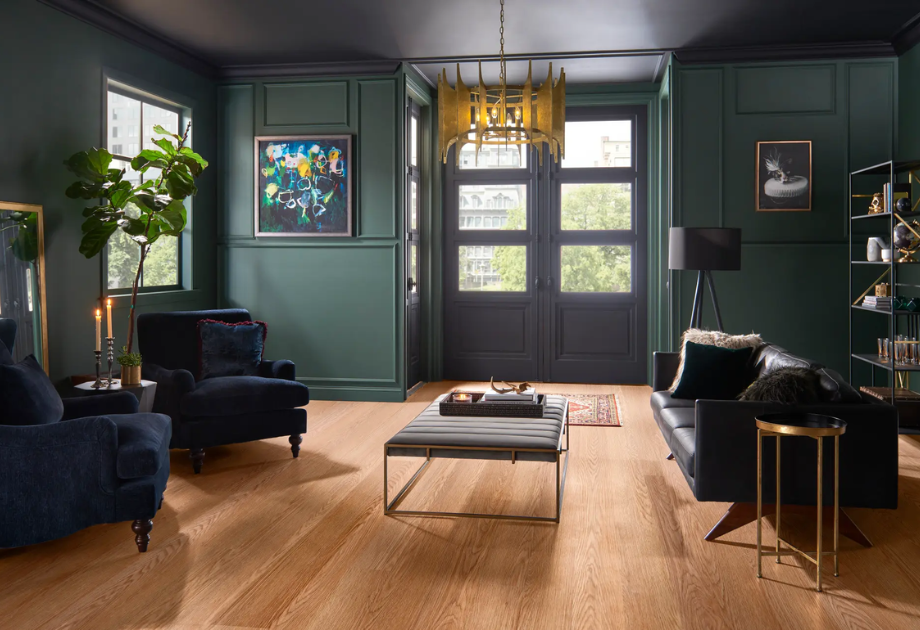Does Wide Plank Flooring Belong in Your Home?
Does Wide Plank Flooring Belong in Your Home?
.jpg)
Walk into a room with wide plank flooring and it immediately sets the tone. Long, seamless boards pull your focus forward, shaping the space with rhythm and clarity. The grain adds movement, the scale adds weight, and the entire floor becomes part of the architecture, not just a backdrop.
Unlike narrower planks, this style makes its presence known. It gives the room a sense of scale and direction that supports thoughtful design. And when chosen well, it creates a lasting foundation for the way you want the space to feel.
This blog explores when wide plank flooring works best, what factors can impact the result, and how to choose a style that complements both the home and the way it’s used.
It Changes the Room Before You Add Anything Else
The effect starts with proportion. Wide planks stretch across a room with fewer seams and longer lines, making the floor feel more expansive and grounded. The visual texture of the wood becomes a feature rather than a backdrop, drawing the eye and shaping the way the room is experienced.
In open layouts, this helps connect furniture groupings and architectural elements. In more compact or segmented areas, the outcome depends on how the boards are placed. Orientation, transitions, and nearby features all play a role in how natural the result feels.
When planned with intention, the scale of wide plank flooring becomes a tool to support flow and coherence throughout the home.

Layout Influences the Impact
Wide plank flooring is at its best when the space supports its scale. In long, narrow rooms, very wide boards can emphasize the shape in ways that feel stretched or uneven. But in square or open spaces, they often appear balanced and proportionate.
The path through the home matters too. Consider how people move through the space, where furniture will sit, and which direction draws the eye. These choices affect not only appearance but comfort and functionality.
Material also plays a role. Solid hardwood works well in above-grade rooms with consistent conditions. For lower levels, kitchens, or older homes where humidity shifts are more common, engineered wide plank flooring, vinyl, or laminate are usually better fits. Its layered structure reduces seasonal movement and supports a smoother installation over less stable subfloors.
If you're designing for performance and longevity, this is one of the most important choices to get right.
Material Options That Make the Most of the Look
Not every wood species works well in wide plank format. The best choices bring both visual consistency and structural reliability, helping the floor look composed at a larger scale.
White Oak

A consistently popular choice, white oak brings a clean, neutral tone and even grain. It adapts easily to modern, transitional, or Scandinavian-inspired interiors. Its durability and workability also make it a smart option for high-traffic areas.
.jpg)
Red Oak
Red oak introduces a warmer tone and more visible grain movement. Its character works well in traditional or transitional settings, especially when variation is part of the design. While slightly softer than white oak, it still holds up well across most residential spaces.
Hickory
.jpg)
If you want drama, hickory delivers. Its bold contrast, knots, and pronounced grain give it a lot of personality. It’s ideal for larger, open areas where the variation has room to breathe. It’s also one of the hardest domestic hardwoods.
Walnut
.png)
Walnut offers a deep, rich tone with subtle shifts in color. It brings a refined, softened feel to formal spaces, bedrooms, or offices. While softer than oak or hickory, it holds visual depth that’s especially compelling in wider boards.

Wide Plank Vinyl Flooring
For rooms that need added durability or water resistance, wide plank vinyl flooring offers a similar look with a more practical surface. Many styles mimic the tones and grain of white oak, walnut, or hickory, giving you aesthetic impact with less upkeep.
Vinyl performs well in kitchens, basements, laundry rooms, or homes with kids and pets. The format still delivers long lines and open sightlines, which are part of what makes wide planks appealing in the first place.
Finish and Texture Choices
Finish changes both the visual tone and the way the floor handles wear.
Matte finishes soften reflections and do a better job of hiding dust or surface scuffs. Wire-brushed textures enhance grain and disguise scratches. Glossy or smooth finishes can feel sleek in low-traffic settings, but they tend to show imperfections quickly.
The best finish depends on the way the room is used. For everyday spaces, more forgiving textures and low-sheen options hold up better over time.
For additional guidance on matching finish, style, and budget, explore our blog on flooring choices that match your budget, style, and needs.
If It’s on Your Mind, It’s Worth Exploring with A Step Above Flooring
Wide plank flooring changes a space in ways that few other design choices can. It’s a bold, visual choice that often becomes the foundation for the rest of the room’s style. If you’re picturing how it could look in your home, it might be time to take the next step.
To see how wide planks have helped shape real homes, take a look at our blog featuring inspiring ways flooring can redefine your home’s personality.
At A Step Above Flooring, we work closely with homeowners, designers, and builders to help turn ideas into lasting results. If wide plank flooring feels like the right fit, we’re here to talk through the options.
Reach out to us to schedule a consultation and find the flooring that supports your space beautifully.
